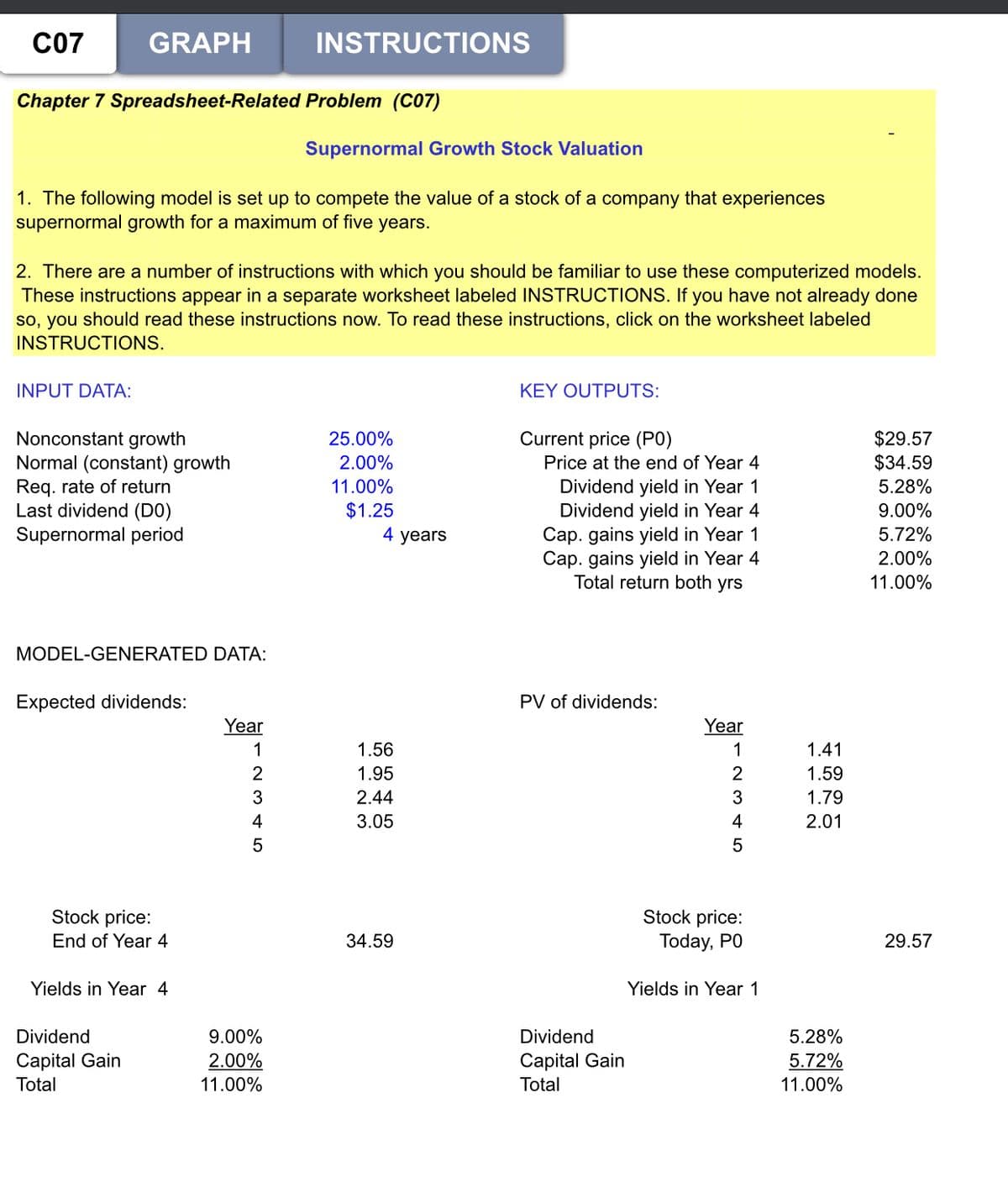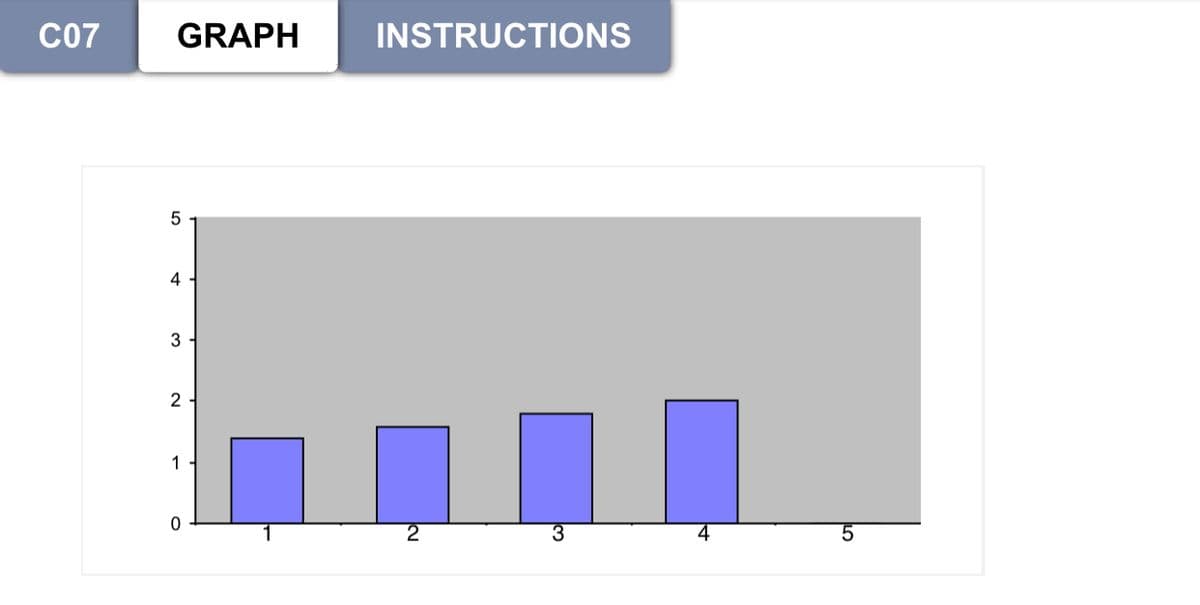Microweb Company has never paid a dividend. But, this year, the company expects to pay a dividend equal to $2.50 per share, and it plans to continue paying this same dividend for the following two years (a total of three years). After the $2.50 dividend is paid at the end of Year 3 (i.e. beginning in Year 4), the company expects the dividend to grow at a normal (constant) 3% growth rate , and this growth rate will continue indefinitely (there is no nonconstant growth expected). If investors require a 14% rate of return to purchase the company's common stock, what should be the market value of Microweb's stock today (current price)? What would the market value (price) be at the end of Year 3?
Microweb Company has never paid a dividend. But, this year, the company expects to pay a dividend equal to $2.50 per share, and it plans to continue paying this same dividend for the following two years (a total of three years). After the $2.50 dividend is paid at the end of Year 3 (i.e. beginning in Year 4), the company expects the dividend to grow at a normal (constant) 3% growth rate , and this growth rate will continue indefinitely (there is no nonconstant growth expected). If investors require a 14% rate of return to purchase the company's common stock, what should be the market value of Microweb's stock today (current price)? What would the market value (price) be at the end of Year 3?
Chapter7: Valuation Of Stocks And Corporations
Section: Chapter Questions
Problem 22SP
Related questions
Question
. Percentages need to be entered in decimal format, for instance 3% would be entered as .03.
- Microweb Company has never paid a dividend. But, this year, the company expects to pay a dividend equal to $2.50 per share, and it plans to continue paying this same dividend for the following two years (a total of three years). After the $2.50 dividend is paid at the end of Year 3 (i.e. beginning in Year 4), the company expects the dividend to grow at a normal (constant) 3% growth rate , and this growth rate will continue indefinitely (there is no nonconstant growth expected). If investors require a 14% rate of return to purchase the company's common stock, what should be the market value of Microweb's stock today (current price)? What would the market value (price) be at the end of Year 3?
- Ultimate Electric, Inc. has just developed a solar panel capable of generating 200% more electricity than any solar panel currently on the market. As a result, Ultimate is expected to experience a 15% annual (nonconstant) growth rate for the next five years (supernormal period). When the five-year period ends, other firms will have developed comparable technology, and Ultimate's growth rate will slow to 5% per year (constant) indefinitely. Stockholders require a return of 12% on Ultimate's stock. The firms's most recent annual dividend (D0), which was paid yesterday, was $1.75 per share. What is the current price (P0) of the stock today? What is the market value (price) at the end of Year 5?
- Consider the scenario in Question 2, what is the dividend yield in Year 1 and Year 5? What is the expected
capital gains yield in Year 1 and Year 5? What is the expected total return (dividend yield plus capital gains yield) for Year 1 and Year 5? - Consider the scenario in Question 2 and suppose your boss believes that Ultimate's annual nonconstant growth rate will only be 12% during the next five years and that the firm's normal growth rate will only be 4%. Under these conditions, what is the current price of Ultimate's stock? What is the price at the end of Year 5?
- Consider the scenario in Question 2 and suppose your boss regards Ultimate as being quite risky; therefore, your boss believes that the required rate of return should be higher than the 12% originally specified. What is the current price of the stock, if the required rate of return is 13%? 15%? 20%? What is the effect of the higher required
rates of return on Ultimate's stock price?

Transcribed Image Text:CO7
GRAPH
INSTRUCTIONS
Chapter 7 Spreadsheet-Related Problem (C07)
Supernormal Growth Stock Valuation
1. The following model is set up to compete the value of a stock of a company that experiences
supernormal growth for a maximum of five years.
2. There are a number of instructions with which you should be familiar to use these computerized models.
These instructions appear in a separate worksheet labeled INSTRUCTIONS. If you have not already done
so, you should read these instructions now. To read these instructions, click on the worksheet labeled
INSTRUCTIONS.
INPUT DATA:
KEY OUTPUTS:
Nonconstant growth
Normal (constant) growth
Req. rate of return
Last dividend (DO)
Supernormal period
Current price (P0)
$29.57
$34.59
5.28%
25.00%
2.00%
Price at the end of Year 4
11.00%
Dividend yield in Year 1
Dividend yield in Year 4
Cap. gains yield in Year 1
Cap. gains yield in Year 4
Total return both yrs
$1.25
4 years
9.00%
5.72%
2.00%
11.00%
MODEL-GENERATED DATA:
Expected dividends:
PV of dividends:
Year
Year
1
1.56
1
1.41
1.95
2
1.59
2.44
3
1.79
3.05
4
2.01
Stock price:
Stock price:
End of Year 4
34.59
Today, PO
29.57
Yields in Year 4
Yields in Year 1
Dividend
9.00%
Dividend
5.28%
2.00%
5.72%
11.00%
Capital Gain
Capital Gain
Total
11.00%
Total
1234 5

Transcribed Image Text:C07
GRAPH
INSTRUCTIONS
4
3
2
1
Expert Solution
This question has been solved!
Explore an expertly crafted, step-by-step solution for a thorough understanding of key concepts.
This is a popular solution!
Trending now
This is a popular solution!
Step by step
Solved in 5 steps

Knowledge Booster
Learn more about
Need a deep-dive on the concept behind this application? Look no further. Learn more about this topic, finance and related others by exploring similar questions and additional content below.Recommended textbooks for you



Fundamentals of Financial Management, Concise Edi…
Finance
ISBN:
9781285065137
Author:
Eugene F. Brigham, Joel F. Houston
Publisher:
Cengage Learning



Fundamentals of Financial Management, Concise Edi…
Finance
ISBN:
9781285065137
Author:
Eugene F. Brigham, Joel F. Houston
Publisher:
Cengage Learning

Fundamentals of Financial Management, Concise Edi…
Finance
ISBN:
9781305635937
Author:
Eugene F. Brigham, Joel F. Houston
Publisher:
Cengage Learning

Fundamentals of Financial Management (MindTap Cou…
Finance
ISBN:
9781337395250
Author:
Eugene F. Brigham, Joel F. Houston
Publisher:
Cengage Learning

Fundamentals Of Financial Management, Concise Edi…
Finance
ISBN:
9781337902571
Author:
Eugene F. Brigham, Joel F. Houston
Publisher:
Cengage Learning